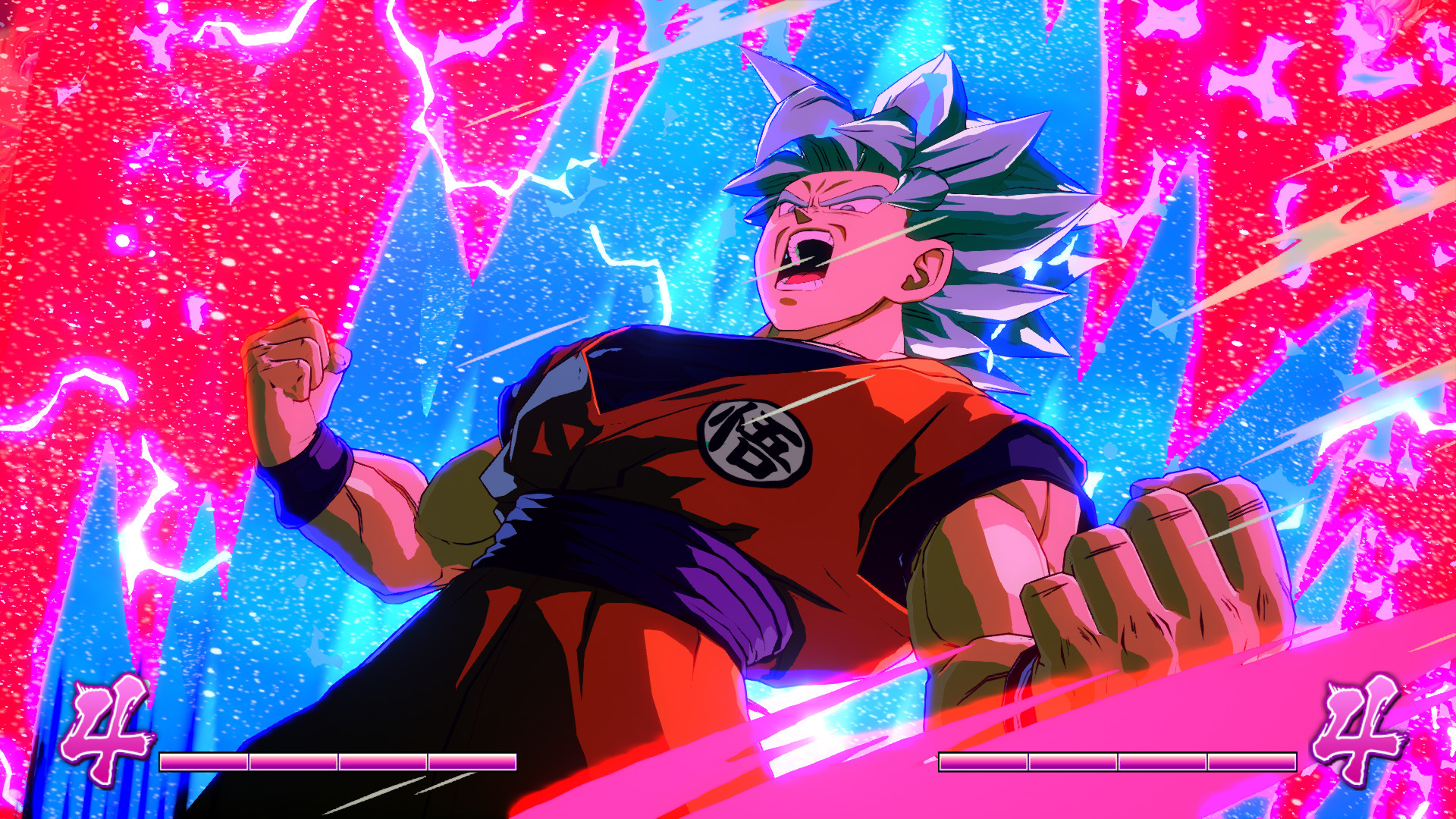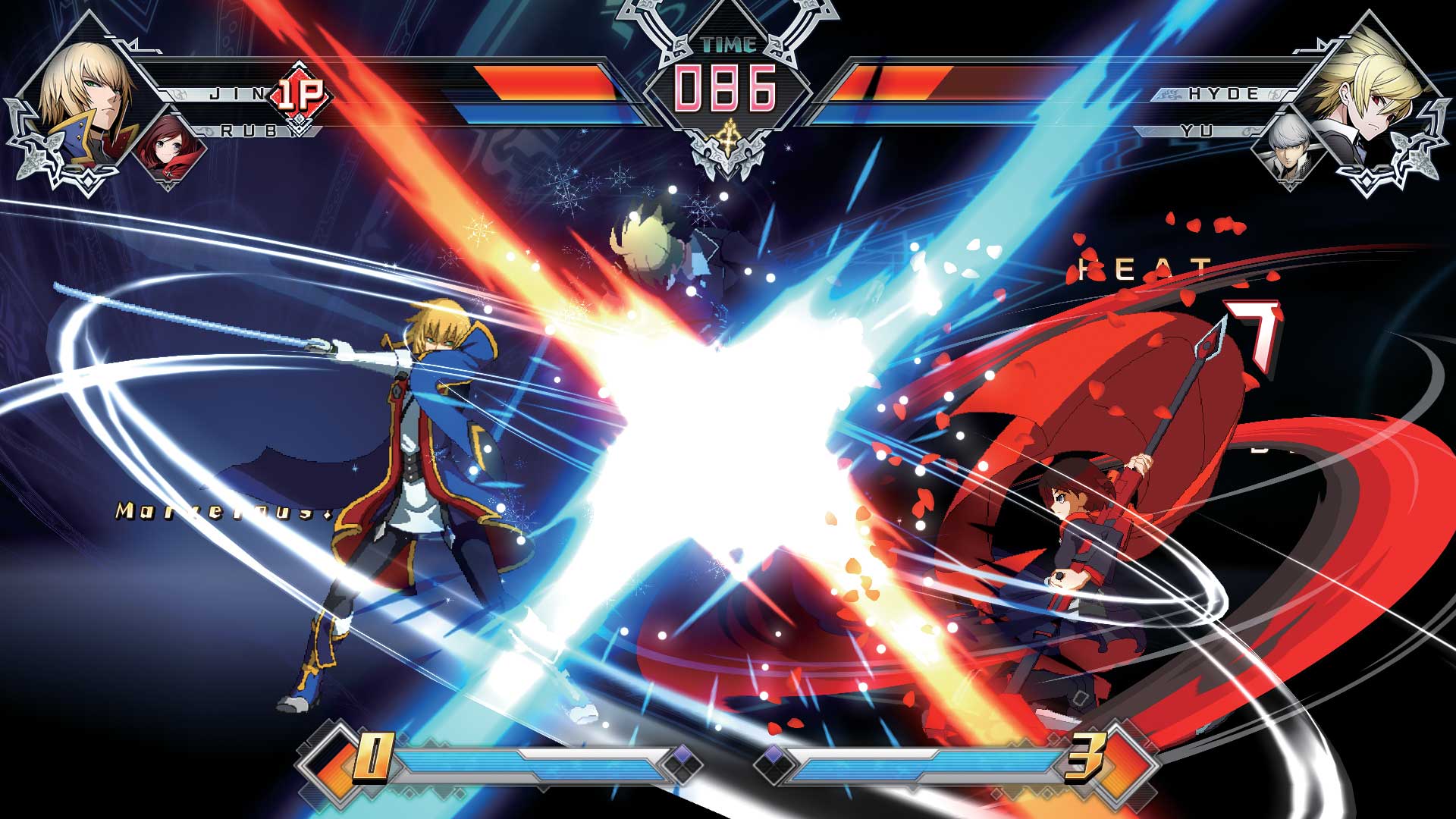
Above: Fighterz has been especially popular among competitive players.
Though made to celebrate the company’s history, the anniversary song also illustrates just how big of a year Arc System Works had in 2018. Dragon Ball Fighterz, developed in partnership with Bandai Namco, was a critical and commercial hit, selling a combined 3.5 million copies between retailer shipments and digital purchases.
Fighterz is the ideal marriage of Arc’s striking 2.5D gameplay style (which first debuted in 2014’s Guilty Gear Xrd) and a classic anime franchise that resonates well beyond fighting game circles. It drew a big crowd at Evo 2018, with a climactic final bout between two of the fighting game community’s most well-respected pros: Dominique “SonicFox” McLean and Goichi “GO1” Kishida.
In May, Arc released BlazBlue: Cross Tag Battle, its first crossover fighting game, and one that harkens back to Mori’s original goal of making BlazBlue an accessible experience. The designer described it as an experiment, a challenge for the team to do something new and different with the 10-year-old franchise. He was trying to embody the “Challenge” pillar of the company slogan.
Kidooka said it’s a special time for the studio, noting that what was once a small, primarily Japanese fanbase has grown into a worldwide audience. The company’s increased presence overseas is a reflection of that globalization: It opened an office in Seoul, South Korea in 2016, and an American branch in Torrance, California a year later. In total, Arc has 200 employees.
“We’re able to give back to the community and a lot of the creators who contributed their blood and sweat to 30 years of history,” Kidooka said. “I think now is a really big moment for Arc System Works. Now is the time we really have to work hard!”
“We’re working really hard, Kidooka!” Ishiwatari playfully added.
When it comes to the company surviving for three decades, the president credited the team’s tenacity and their attitude of never giving up, saying that Arc has had just as many failures as successes. Staying laser-focused on making games also helped. But this doesn’t mean they’re afraid to rethink their approach.
If Arc System Works is to stick around for another 30 years, Kidooka reasoned, it needs to stay flexible enough to respond to rapid changes within the industry.
“Having a fun game is really just [the beginning]. All the games out there are really well-made and really fun, so how do we add that extra flavor, that extra element that will capture attention and create a memorable experience for a lot of fans?” said Kidooka. “I think we’re going to have to really evolve and be aware of not just game development — creating something fun that stands out — but the promo side of it, the marketing side of it, how we bring these games to people.”

Above: CrossTag is a mash-up of several different franchises, including Persona and Rooster Teeth’s RWBY.
The Arc Revo World Tour, a global fighting game tournament centered on Guilty Gear Xrd: Rev 2, BlazBlue: Cross Tag Battle, and BlazBlue: Central Fiction, is one example of this plan. Top players from regional competitions will head to Los Angeles this fall for the grand finals event, where they’ll compete for the $100,000 prize pool.
“We’re in an era where you can’t sell a packaged game and call it a day. … I’m not just talking about simple updates, but the different ways people play: being aware of the World Tour, seeing a game as a piece of content, an IP, and deploying it into other mediums,” Kidooka said. “With the internet having evolved as far as it has, we really need to approach each game with a very wide perspective.”
Preparing for the next three decades
As Kidooka and his colleagues ponder the modern business realities of releasing a game, creatives like Ishiwatari and Mori are thinking about the future of their franchises and how they should encourage the next generation to take the lead.
Both developers are well-aware of how hard Guilty Gear and BlazBlue have become for the average player. But at the same time, they believe that the genre has room for more accessible games that are still a lot of fun to play. One of the big discussions they’re having at the studio is what a game like that might look like under the Arc brand.
“Among our different teams, we talk a lot about what kind of taste, what should the feel, what should the color of each game look like,” Ishiwatari said.
Since style and presentation play such an important part of its games, Arc is also trying to figure out what its next big visual hook or aesthetic might look like. It doesn’t want to repeat what it’s done before. Ishiwatari said that BlazBlue “mastered and completed that 2D visual design and style of expression,” and that Dragon Ball Fighterz “perfected” the hybrid 2D-to-3D gameplay from Guilty Gear Xrd.
He used a train track analogy to explain his thought process: With the 2D and 3D “tracks” reaching their final destinations because of BlazBlue and Fighterz, he’s eager to find a third track, one that represents a new kind of style that the team can build on.

Above: Sol Badguy in Guilty Gear Xrd Revelator.
“I want to keep the two tracks that we laid in the past — definitely keep those alive — but what’s the new, unseen track that we can switch to?” said Ishiwatari. “But maybe one day, we’ll come full circle, and we’ll go all the way back to the 2D track. I don’t know!”
Whatever game that ends up going down this new path might have nothing to do with their two biggest properties. To continue its momentum, the studio will need its younger designers to dream up new games and universes — just like Ishiwatari and Mori did with Guilty Gear and BlazBlue. Both men attributed Arc’s longevity to the free and open-minded culture that Kidooka established, one that encourages employees to bring new ideas to the table.
“I know it’s easy to look at Guilty Gear and BlazBlue because those are our two flagship games,” said Ishiwatari. “But part of me is hoping and expecting and looking forward to the day when one of our younger creators comes up with a brand-new IP — that will be the third, fourth, fifth, who-knows-what pillar — to support Arc as a company.
“But I still need to work really hard right now so I can stay as their mentor when that day comes. [Laughs]”

